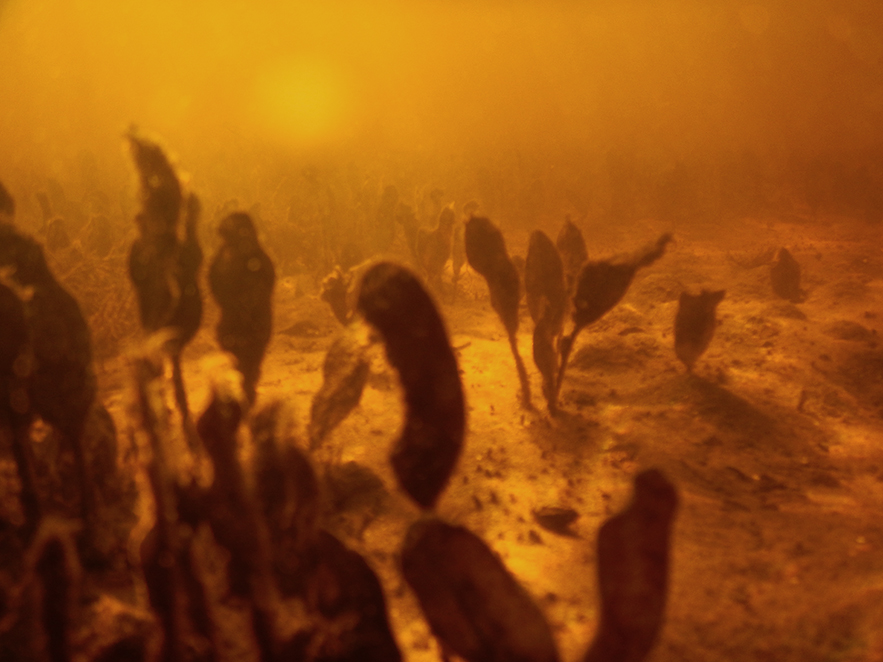European settlers built Perth around the Swan River, or Derbal Yaragan in Noongar language.
To them, the river was an artery of trade and communication deeper inland.
Before that and to the present day, its banks have provided medicine and food to the Noongar people. The river is sacred to the Dreamtime spirit, the rainbow serpent Waugal.
But beneath the water’s surface, it’s important for a different reason. Thick forests of the seagrass Halophila ovalis cover over 403 hectares.
The Swan River and Canning River meet near the sea, forming the Swan-Canning Estuary.

Seagrass forests keep the estuary alive. They’re the foundation of food, shelter and oxygen to all life in the brackish water.
But humans are changing the world’s climate. This impacts every living thing, including the seagrass forests. Will the Swan-Canning survive climate change?
Where the river meets the sea
Edith Cowan University ecologist Chanelle Webster has been tracking how seagrasses manage after heavy storms.
Chanelle studies estuaries, where the rivers meet the ocean mixing saltwater and freshwater.
Storms can change the salt content of estuary water, which endangers the local plants and animals
“The effects of rising temperature are well known, but there hasn’t been much research on how climate change affects salt levels in these estuaries.”
“Animals have the option of swimming elsewhere if the salt concentration changes, but seagrass is stuck,” says Chanelle.

“We expected that seagrass populations have different salt tolerances. Depending on where they grow in the estuary, the salt concentration changes regularity.
“Populations closest to the river mouth would be more exposed to freshwater and be more resilient to lower salt levels such as after rainfall.”
But even resilient seagrasses could still die out if storms push beyond their salt tolerance.
Seagrass, storm and salt
All living things need to manage the levels of salt within their cells and the environment.
If cells don’t get enough salt, they can fill with water and burst, while too much can dehydrate and kill cells.
Every living thing has evolved to survive a specific range of salt in its environment.
For larger organisms like plants, this evolution takes millions of years. It’s not something that can change overnight.
During the 2017 summer, storms lashed the southwestern coast of Australia.

This diluted the Swan-Canning Estuary's salty water and caused a mass die-off of the seagrass.
“The real issue isn’t one storm coming along and wiping out seagrass. These estuaries have bounced back in the past. We worry about unseasonal storms like in 2017. During summer, estuaries are saltier, letting seagrasses grow and reproduce,” says Chanelle.
“We found that seagrass populations close to the ocean, where salinity is generally more stable, were not able to recover over 22 months. If we’re expecting more intense and more frequent storms, these populations could be lost and cause a decline in estuary health.”
As the Earth warms, moisture collects in the atmosphere. This means more frequent, intense storms.
How we can protect our sunken forests
Finding seagrass species that can resist salinity changes and storms will protect parts of the estuary.
This will keep food and shelter available for animals.
We could replant seagrasses downstream after storms to help populations recover.
We might also build flood barriers in estuaries to maintain the salt concentration.
“We’re most concerned about this in summer when the seagrass is fruiting. This is when both the plants and the juveniles are most vulnerable to environmental changes,” says Chanelle.
Sheltered seagrass reservoirs could repopulate the estuaries when summer storms hit.
With more research and community action, there might be other ways to protect the seagrass.
If we protect the seagrass, we protect the whole estuary.
And if the Swan River is the economic, environmental and spiritual lifeline of Perth, we keep Perth healthy too.









